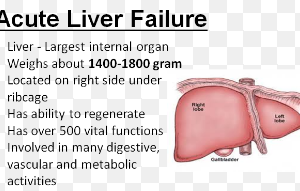
Causes of blue fingernails don’t always mean that something’s wrong with your heart, but in some cases, a heart problem can cause fingernails to turn a bluish color.
The context of this situation is very important. For example, if you’ve always been a competitive athlete, say for instance, a CrossFit or martial arts enthusiast, and you don’t have any overt risks for heart problems such as smoking, diabetes or overweight…
…and you develop a blue tinge to your fingernails, chances are that this is not related to your heart.
For instance, non-cardiac causes of blue nails may be a side effect from medication or exposure to high altitude.
More serious causes, not related to a heart condition, are asthma, chronic obstructive pulmonary disease, severe anemia or shock.
Blue fingernails “can be a sign of Raynaud’s disease or hypoxia [shortage of oxygen] due to respiratory failure or cardiac failure,” says Teri Dreher, RN, CCRN, an award-winning RN patient advocate and pioneer in the field of private patient advocacy.
Dreher, a critical care nurse for 30+ years, is a former cardiovascular nurse clinician for Wisconsin Heart and Vascular.
“If people get really cold after exposure to the elements or near drowning, the nails will also be blue,” says Dreher. When nails or skin turns blue, this is called cyanosis.
Raynaud’s disease is not a cardiac condition, but an arterial condition in which small arteries spasm and thus blood flow is restricted.
What exactly is “heart failure”?
The term “failure” can be confusing to some people, as it conveys stoppage or cessation. But in the case of congestive heart failure, the “failure” refers to the heart’s failure to pump adequately.

Shutterstock/Designua
Again, it’s not likely that the gym rat who kills it on the treadmill or with the deadlifts, squats and heavy kettlebell swings actually has congestive heart failure.
And congestive heart failure doesn’t always cause fingernails to turn blue, either.
But if you have risk factors for congestive heart failure and notice your fingernails have been blue lately, it’s time to see a cardiologist to see if, indeed, this is being caused by CHF.
Common Symptoms of CHF
• Shortness of breath upon activity or when lying down
• Puffiness or swelling of the lower legs or feet
• Unexplained weight gain (from fluid buildup in the body)
• Ongoing cough, especially with pink phlegm
• Fatigue and weakness
• Swelling stomach despite not eating more
• Reduced appetite
• Having to urinate more overnight
Risk Factors for CHF
• Heart attack or disease
• Valvular heart problems
• Heart rhythm abnormality
• High blood pressure
• Diabetes
• Drinking and smoking
• Obesity
• Medications (this list is generous)
You’re probably wondering why sedentary lifestyle or “lack of exercise” is not on this list.
However, the absence of an exercise regimen is a major risk factor for heart attack/disease, high blood pressure, type 2 diabetes and obesity.
If you have blue fingernails and any of the above risk factors or other symptoms, you indeed could have congestive heart failure, which ranges from mild to severe.
Either the cardiac muscle doesn’t pump enough blood, or, the pumping is fine but the chamber doesn’t fill with enough blood before each pump.

 Teri Dreher, RN, CCM, is the founder of
Teri Dreher, RN, CCM, is the founder of 







































